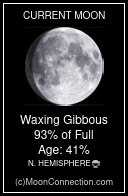The Nevada desert has a way of surprising you, no matter how often you visit. It’s full of out-of-the-way landmarks that don’t make it into travel brochures. One of those places is the Mount Irish Petroglyph Site, located about 120 miles north of Las Vegas in Lincoln County, Nevada, a spot where ancient stories are carved into stone.
The petroglyphs aren’t just art either. They’re the effort of people who lived here long before modern society. Stories in stone, inspired by the same vast desert landscape you’ll experience when you visit.
And yes, there’s something about standing out there, far away from city lights and noise, that makes time feel different. The night sky looks endless, and the stars feel more present than anywhere else—not just visually, but spiritually. It’s not just about seeing the petroglyphs or the stars; it’s about feeling like you’re part of an existence so much bigger than your day-to-day.
Stargazing around Mount Irish - Lincoln County, Nevada
Mount Irish Petroglyph Site
Here, among the petroglyph-covered rocks, you can look across the landscape and also gaze up at the same stars that inspired ancient hands to carve their stories into stone. There’s a quiet magic in standing where history was made, as constellations light up the night and bridge the gap between past and present.
- Accessibility: It is recommended that when traveling out there, a sturdy two wheel drive vehicle may be sufficient to navigate the roads to the site but 4WD vehicle is preferable. And don't forget your camping gear and supplies. Especially if you don't have room to sleep in your vehicle.
Nearby locales:
Pahranagat National Wildlife Refuge
A calm oasis of sorts about 30 miles south of Mount Irish Petroglyph site, this refuge offers more than wildlife sightings.. it’s also an amazing place to camp at and stargaze.
Tikaboo Valley
The vast expanses of Tikaboo Valley, known for their eerie beauty and famed proximity to Area 51, are a magnet for both stargazers and UFO enthusiasts. Out here, beneath a dome of uninterrupted starlight, the sense of the infinite is undeniable. And who knows? You might just catch sight of unidentified objects traversing the night sky.
Best Times of Year to Visit Mount Irish
What month is best for stargazing at Mount Irish?
The best time of year to visit Mount Irish for stargazing is from April to June. That time of year has many reasons why it is a great time of year for stargazing there:
Stable weather conditions that give a clear view of the sky.
You'll have more hours of darkness if you're something who enjoys stargazing for hours on end.
The area around Mount Irish is known for its dark night sky views, making it an excellent location for stargazing year-round.
Some tips to help with your stargazing experience:
Plan your visit during a new moon phase for the darkest skies possible.
The summer months (late spring to early autumn) offer views of the Milky Way's core stretching across the southern horizon, especially around midnight or later.
The best stargazing opportunities at Mount Irish coincide with new moons and meteor showers throughout the year. The Perseid meteor shower, peaking around August 12, offers a spectacular summer display with up to 90 meteors per hour under ideal conditions. The Geminid meteor shower, peaking on December 13-14, provides a winter stargazing spectacle with potential rates of up to 150 meteors per hour.
For the Geminids, be prepared for cold temperatures, as winter nights in the Nevada desert can be frigid. Despite the chill, the Geminids are known for their distinctive greenish hue, making them particularly captivating.
Aligning your visit with these celestial events can significantly enhance your stargazing experience at Mount Irish under Nevada's dark desert skies, offering not only dark skies but also the added bonus of meteor showers
Recommendations of what to bring with you
- Bring a Red Flashlight: As simple as covering a flashlight in red cellophane. Preserves your night vision.
- Seating: For if you plan to be stargazing for a while.
- Layers, Winter Gloves, and Handwarmers or other supplies for warmth: Desert nights can surprise you with their chill.
- Binoculars or Telescope
Related Links:
https://www.rachel-nevada.com/places/irish_petroglyphs.htmlhttps://travelnevada.com/stargazing/dark-sky-parks-in-nevada/
https://www.alltrails.com/trail/us/nevada/mt-irish-petroglyphs
https://www.summitpost.org/mount-irish-nv/714172
https://www.gjhikes.com/2019/11/mount-irish-site-vi.html
https://lincolncountynevada.com/exploring/rocking/rock-art/mount-irish-rock-art-site/







